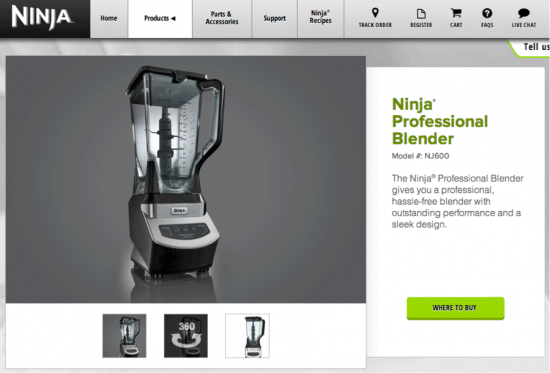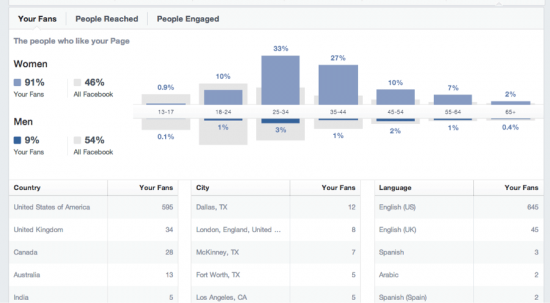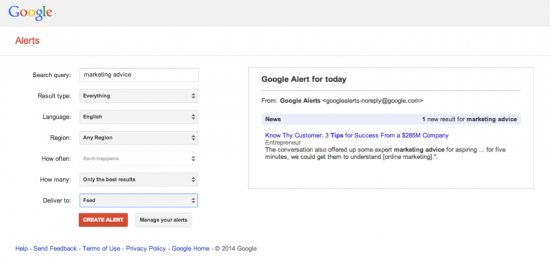
Often you’re so close to your product or service that you’re not sure why your ideal clients need you …
That’s why, when creating your marketing strategy, you should always start at the beginning – even if you think you understand your ideal clients better than they understand themselves …
What’s the beginning?
It’s the research.
Before you spend time or money marketing your services, you need to know who you’re talking to …
- What do they want?
- How do they talk?
- How do they feel?
- What problems do they need solved?
- What do they do in their free time?
- How old are they?
Knowing these things about your prospective clients will help you attract them, connect with them, and ultimately sell to them.
Here’s an example to put this in perspective …
Let’s say you’re a freelance virtual assistant.
Maybe you think your ideal clients want to save time … so you approach all your marketing from a “save time” perspective …
Unfortunately, your ideal client doesn’t connect with your message. Maybe their most pressing issue isn’t time …
Wouldn’t you like to know that before you create your entire marketing plan?
To do that, start with research – and the goal of understanding your target market and their true needs …
Here are three ways to research your ideal clients – so you can attract more of them –
1. Ask your past and current clients.
When researching why your customers buy your product or service, the best resource is your actual customers.
Asking real customers – who have paid actual money – gives you real insight.
In many cases they will tell you exactly why they choose you over someone else.
Then, you can use that information to appeal to potential clients just like them. (Note: This is only advised if you like your current clients.)
When someone buys your product or service, immediately ask him or her, “Why did you purchase today?” or something similar. For example, you might ask:
- What about (this product) are you most excited about?
- Why did you choose to invest in (product or service) today?
- What was the biggest factor that led you to hiring me as your freelance contractor vs. other freelance contractors?
The sooner you ask this question, the better because you want the information while it’s fresh on their mind.
You could add a form to your “thank you” page, ask past or current clients via phone or email, or make this question part of your client intake process.
For an example of just how powerful this question can be, let’s look at two comparable products – and how they position themselves in the market …
First, is the Ninja blender:
Surprisingly, this Ninja page is very generic … the copy doesn’t appeal to any of the reasons that I would buy a blender …
Also, this page talks about the features of the product … the Ninja has a sleek design … and it’s hassle free …
As a copywriter, I know that people don’t buy for features. They buy because of benefits (which are the problems that the product or service solves).
On the other hand, take a look at this page, from The Magic Bullet Blender:
This page does a much better job of explaining the benefits that real customers want.
They don’t just say, “It’s professional,” they say it’s fast – doing any job in 10 seconds or less.
Also, this particular message appeals to a benefit the ideal customer likely wants – they can use it to make healthy weight-reducing smoothies …
So, what’s their secret?
They researched, listened, and understood their ideal customer.
If Ninja took the time to ask their actual customers, then they’d know that customers buy for benefits – like losing weight and saving time. They’re far less interested in features – like sleek design and “outstanding performance.”
What can we learn from this blender blunder?
Just ask your clients why they bought.
Then, use their answers to highlight the benefits that matter most.
2. Dig into social media.
When it comes to understanding your ideal clients, Facebook is a great tool. All you have to do is setup a business Facebook page and have a handful of fans that are also your ideal clients.
For instance, if you’re a graphic designer for small business websites, you’ll want a following that’s comprised of those most likely to hire you … people who own small businesses.
Then, dig through your fans’ pages. Ask yourself:
- What other pages do they like?
- What do they say in their status updates? And how do they say it?
- What do they complain about – or what problems do they need solved?
Be sure to look for similarities and the language they use. Then, incorporate those things into your marketing.
For instance, let’s say you’re a freelance copywriter … and you find that the majority of your fans (also your ideal clients) like “Game of Thrones” …
You could market yourself with a piece of content titled, “4 Website Content Lessons from ‘Game of Thrones’” and your ideal clients are likely to eat it up!
Pages Insights
To get data on all your fans as a whole, head over to the Page Insights feature (found at the top of your Page Manager).
Page Insights allows you to view basic demographic data about your audience. They give you information on Gender and Age, Countries, Cities, and Language.
Here’s a screenshot from Page Insights:
As you can see, 91% of this page’s fans are women. A majority of them are in the 25-34 age range.
When we focus our marketing efforts on that demographic, our results are much better. Why? Because we’re appealing to the majority of our fans.
If you’re not using social media to attract and connect with clients, be sure to check out this article: Get More Clients From Social Media (In Just Minutes Each Day)
LinkedIn is primarily for businesses and professional networking. If you’re a freelancer, you likely want to work with businesses … right?
If so, LinkedIn is a great place to get a ton of information.
For instance, a quick search on LinkedIn brought up 4,916 results for “marketing director” –
While many people use LinkedIn to find and contact potential clients, you can also use it to understand your ideal clients better.
Let’s say your ideal clients are marketing directors … by digging through the LinkedIn results you can see things like:
- Groups they belong to.
- Discussions they’re involved in.
- Reviews they’ve left for others.
- The things they find valuable enough to share.
- And a whole lot more.
Within minutes you can learn all kinds of things about your ideal clients – from the skills they value to where they’re active online.
To learn more about researching via LinkedIn, check out this article: How to Use LinkedIn as a Research Engine
3. Spy on your competition.
While I always say that blindly copying your competition is a recipe for disaster, you can still learn a ton by watching them – and their interactions with potential clients.
For instance, if you’re a freelance web designer, take a look at other web designers’ websites, but don’t stop there … dig deeper.
If they have testimonials, what specific traits are praised? By which specific clients?
If they’re engaged in social media, which posts have the best response?
Or for their blog, which articles have the most comments?
Pay special attention to the exact wording that your potential clients are using.
Additionally, many freelancers are willing to share their tips and tricks …
If you find a freelancer doing something that appears effective, why not reach out to them and ask about their specific results with that method?
Google Alerts
Once you complete your first round of “spying,” you’ll want to continuously keep up with your competition. After all, things change fast online.
If you’re short on time, I recommend Google Alerts.
It’s quick and simple to set up and then Google will automatically send you updates based on the keywords that are important to you.
Let’s say you’re a copywriter for hire. Through your research you found that your ideal clients go bonkers for marketing advice. In that case, you could set up a Google Alert for “marketing advice.”
Here’s what it would look like:
All you have to do is plug in your keyword term, choose how often you want results, and then press, “Create Alert.”
Google will then alert you to new search results for your keyword term so you’ll always know what your competition is writing and how potential clients are responding.
Of course, the above are just a few of the many ways you can research your ideal clients to better tailor your marketing to them …
Do you use a research method that I didn’t mention?
I’d love to hear about it in the comments below …






